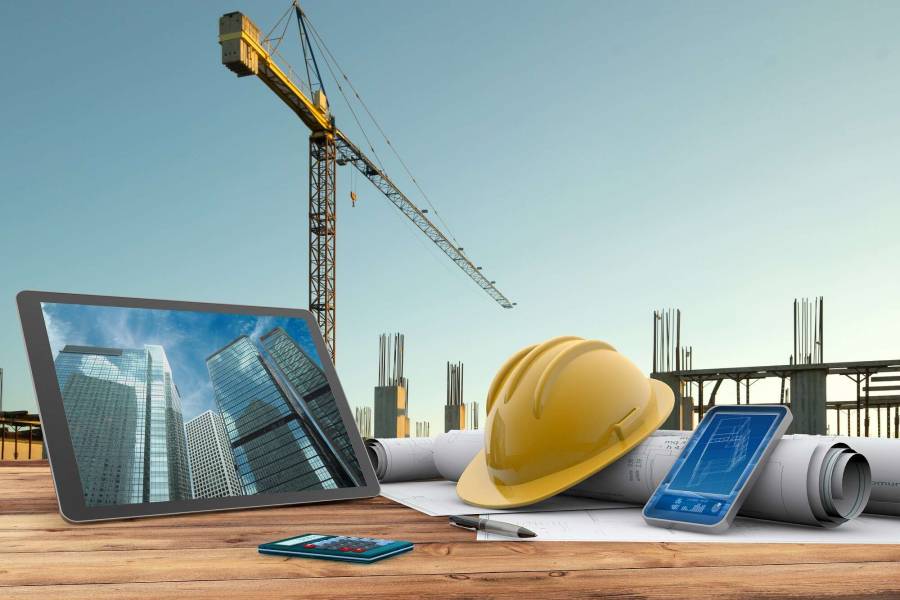
Construction jobs seem too messy for technology to take over. Yet big tech is coming to construction sites in a variety of positive ways. Each of these changes promise to revolutionize the construction process, streamlining timelines and correcting errors in real time.
Drones Watch with Eagle Eyes
Drones provide an eagle eye view of a construction site. You can make adjustments in real time with the ability to see what’s happening on the ground. Some construction managers use those live shots to create a model of what’s happening. This helps them keep track of day-to-day and week-to-week changes. It also may expose problem spots, shoddy workmanship or safety hazards. The drones can monitor the roads and platforms created by used crane mats, making sure the ground is covered where it needs to be for safety and transportation.
Sensors Collect Data on Productivity and Safety
The sensors that can be placed on equipment and materials can be used to track their movements. All of this can become active data that improves productivity and reduces the chances of an accident. It can also summon supplies from a storage unit, ensuring that the materials arrive in a timely manner.
Other sensors can be used to detect trace amounts of dangerous chemicals and biohazards. This reduces the threat to humans and improves response times for clean ups. Some day these same sensors may trigger automatic responses to the danger, stopping the leak before it can become a threat.
Artificial Intelligence Makes Sense of It All
When the data is too much for the human, AI can handle it. It can collect and compare data in real time, reducing the chances of waste. While the human manager is busy, the AI can work to organize the site for greater efficiency. It may propose moving supplies closer to the workers who need them or moving a hazard away from a heavy crane.
Using drones and sensors to monitor construction, AI can watch how the building plan is being implemented. It can spot mistakes and prevent the problems that can lead to delays or, worse, failed inspections. Humans will need to be on hand to interpret this data and approve changes that can be made in real time. All of this reliance on technology will increase the need for high tech construction job recruitment.
Smartwatches Communicate with Home Base
Workers can stay in touch with managers via a smartphone, a smartwatch or some other wearable device. This can be a passive rather than active communication. Managers can see where workers are on the worksite. This allows them to shift workers into areas where the laborforce is too thin.
AI can communicate with workers as well. It can relay messages about the position of supplies or the location of vital equipment. Instead of phone calls that go unanswered or text messages that go unheeded, the worker-AI connection can be a constant that the worker can rely on for information and instructions.
Virtual Reality Provides Training
Workers with limited training in a variety of chores can get the training they need virtually. This is especially true when it comes to safety protocols and difficult equipment operation. It may become a bigger tool as robotic arms become operated by humans who are safely seated away from the action.
Smart Clothing Watches Heart Rates
There’s another application of technology that may protect workers from heatstroke and other dangers. These so-called e-textiles have sensors built in to detect human ailments. These can measure heart rate, body temperature, respiration, and other vital signs. It could be used like driver technology to detect inattention caused by fatigue or substance abuse. The tech could issue warnings to the worker to take a break and to drink some water.
Robots Take the Difficult Chores
While it isn’t happening with great regularity, robots are beginning to show up at jobsites. They aren’t the robots that many picture. Instead they are more like the robotics one finds in a factory. With minimal human interaction, the robots can handle the heaviest materials, the most dangerous tasks, and the most mundane repetitive tasks.
As technology pushes forward, it is destined to perform a makeover on the messy construction process. Streamlining should lead to lower costs and better results.

Founder Dinis Guarda
IntelligentHQ Your New Business Network.
IntelligentHQ is a Business network and an expert source for finance, capital markets and intelligence for thousands of global business professionals, startups, and companies.
We exist at the point of intersection between technology, social media, finance and innovation.
IntelligentHQ leverages innovation and scale of social digital technology, analytics, news, and distribution to create an unparalleled, full digital medium and social business networks spectrum.
IntelligentHQ is working hard, to become a trusted, and indispensable source of business news and analytics, within financial services and its associated supply chains and ecosystems









